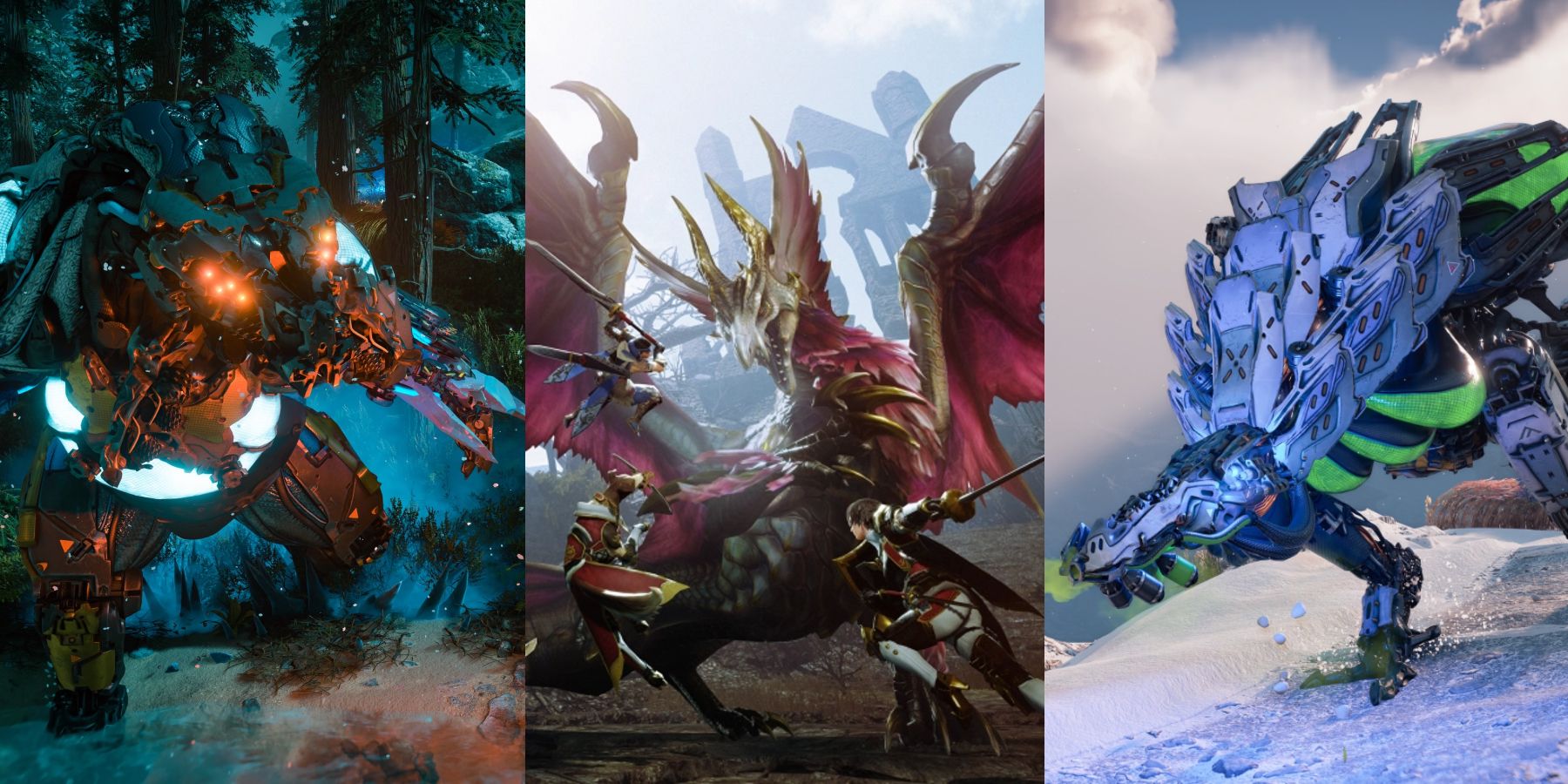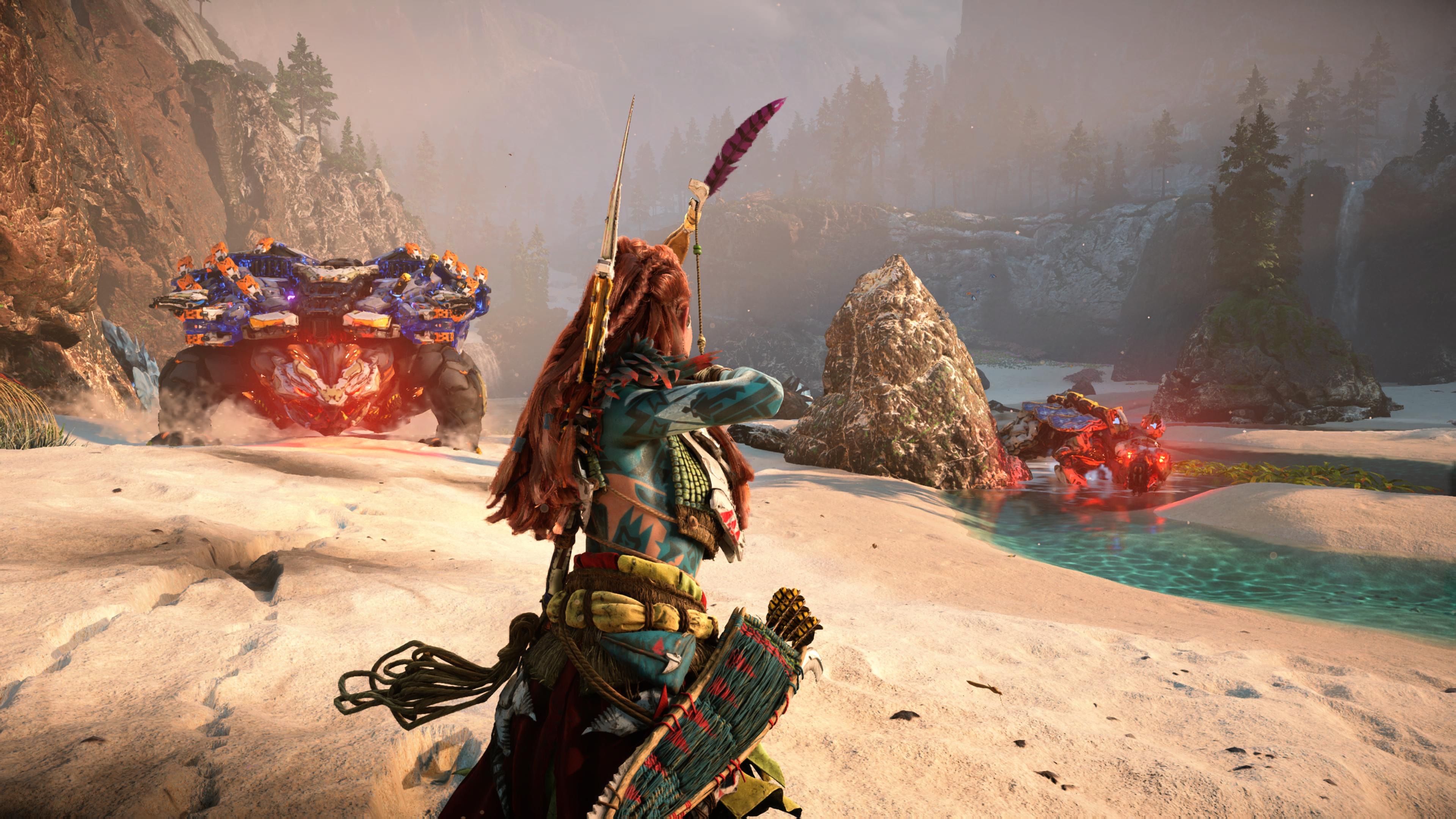Monster Hunter Rise: Sunbreak releases this summer, and with it comes a host of new creatures to take on. While there are some returning favorites like Astalos and Shogun Ceanataur confirmed as part of Sunbreak's roster, there are also brand-new monsters like the "Three Lords" Garangolm, Lunagaron, and Malzeno. Whenever new monsters are added to the series, it inevitably leads to a period where players figure out the most efficient ways to hunt, and which parts can be obtained by breaking each part of their bodies.
The Monster Hunter franchise is about progression. Players take on stronger monsters to collect parts for crafting weapons and armor, ultimately becoming equipped to handle any challenge with a variety of sets that boast unique defensive and offensive capabilities. Guerrilla Games' Horizon Forbidden West has a similar gameplay loop; Aloy hunts machines with specific weak points that net her the parts needed to upgrade weapons and outfits. With this comparison in mind, Capcom could learn from the diverse way machine parts like webbing are collected for future Monster Hunter designs.
How Monster Hunter Part Collecting Works
There are a handful of basic animals running around the world in each Monster Hunter game, typically called "Small Monsters." For example, hunters can collect parts from herbivores like Slagtoth, the brittle insect Altaroth, or the expanding, amphibious shark Zamite. However, the main goal is to tackle a succession of bigger, complex monster bosses. After felling these "Large Monsters," they can be carved up a few times to receive a few parts, but most are obtained after the current mission ends - with the haul being largely luck-dependent.
Some crafts require specific parts that can only be obtained by completing objectives during a hunt, typically breaking specific body parts or capturing monsters. Melee weapons in Monster Hunter are split into blunt and sharp archetypes; able to shatter or cut off certain pieces, respectively. The common adage is that blunt weapons should target the head and sharp weapons the tail, one able to shatter horns or stun monsters while the other severs the appendage.
Every monster has multiple areas to break, and Capcom is smart enough to telegraph how a hunter is affecting their prey so that they can figure out these weaknesses without a guide. Shattered pieces and scars will begin to cover a monster as it takes damage, and for opponents like Rathian or Pukei-Pukei, a severed tail can nerf or eliminate certain attacks altogether.
How Horizon Forbidden West Iterates Upon the Formula
In Horizon Forbidden West and its predecessor Zero Dawn, machine parts work similarly. Aloy can knock off the tail of a Thunderjaw or shatter the claws of a Rockbreaker to both give her more items and disable specific attacks. Both Horizon and Monster Hunter even share elemental weaknesses, encouraging players to hit foes with effective weapon types.
Horizon Forbidden West expands upon its series' skill tree, giving Aloy six overarching styles to concentrate on. The weapons and armor she picks up accrue additional skill points and unique functions for those styles, which means among its possibilities the player can opt to build her for stealth or melee combat. Various machine parts are required to upgrade every piece of gear, some up to five times, and there are special ways to collect more rare pieces.
Aloy may need to knock the fangs off a Dreadwing or the ears off a Scorcher, akin to shattering body parts in Monster Hunter. Yet Horizon Forbidden West adds a few more unique possibilities in this regard, changing the way players approach their hunt. The most obvious example is sac webbing on machines like Bellowbacks, referring to the sacs that hold elemental fluid like Blaze or Chillwater. Bursting these sacs causes an explosion that deals huge damage and afflicts status conditions. However, this eliminates sac webbing as a reward, which the player may need for armor upgrades or a salvage contract.
Having to battle a Snapmaw or Fireclaw without bursting their elemental sacs is a harder challenge because they eliminate attacks when destroyed, have big damage potential, and the physical components are often easy to hit. Monster Hunter is less concerned with pinpoint precision, but it would be interesting to see Capcom make Large Monsters with more unique reward conditions, like sensitive Neopteron wings that need to remain intact rather than broken.
Monster Hunter Rise is available now for PC and Switch.


.jpg)
